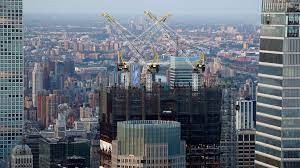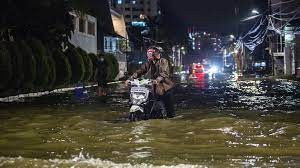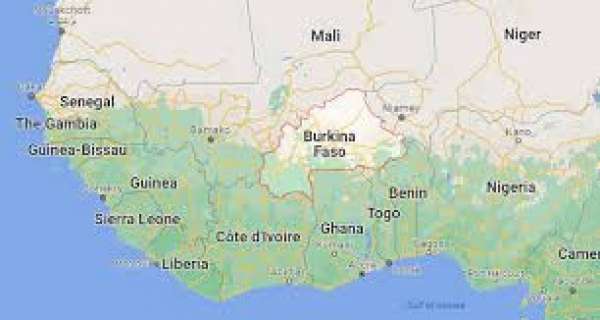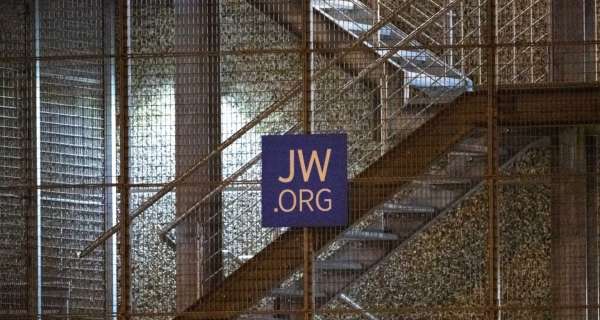The ground under New York City is sinking partly due to the sheer mass of all its buildings – and it isn't the only coastal city to be suffering this fate. As sea levels also rise to meet these concrete jungles, can they be saved?
On 27 September 1889, workers put the finishing touches to the Tower Building. It was an 11-storey building that, thanks to its steel skeleton structure, is thought of as New York City's first skyscraper. The Tower Building is long gone – its plum spot on Broadway was taken in 1914 – but its erection marked the beginning of a construction spree that still has not stopped.
On the 300sq miles (777sq km) that comprise New York City sit 762 million tonnes (1.68 trillion pounds) of concrete, glass and steel, according to estimates by researchers at the United States Geological Survey (USGS). While that figure involves some generalisations about constriction materials, that prodigious tonnage does not include the fixtures, fittings and furniture inside those million-odd buildings. Nor does it include the transport infrastructure that connects them, nor the 8.5 million people who inhabit them.
All that weight is having an extraordinary effect on the land on which it is built. That ground, according to a study published in May, is sinking by 1-2mm (0.04-0.08in) per year, partly due to the pressure exerted on it by the city buildings above. And that is concerning experts – add the subsidence of the land to the rising of sea levels, and the relative sea level rise is 3-4mm (0.12-0.16in) per year. That may not sound like much, but over a few years it adds up to significant problems for a coastal city.
New York has already been suffering subsidence since the end of last ice age. Relieved of the weight of ice sheets, some land on the Eastern Seaboard is expanding, while other parts of the coastal landmass, including the chunk on which New York City lies, seem to be settling down. "That relaxation causes subsidence," says Tom Parsons, a research geophysicist at the Pacific Coastal and Marine Science Center of the USGS in Moffett Field, California and one of the four authors of the study.
But the enormous weight of the city's built environment worsens this subsidence, Parsons says.
And this is a global phenomenon. New York City, says Parsons, "can be seen as a proxy for other coastal cities in the US and the world that have growing populations from people migrating to them, that have associated urbanisation, and that face rising seas".
There is a wide range of reasons for why coastal cities are sinking, but the mass of human infrastructure pressing down on the land is playing a role. The scale of this infrastructure is vast: in 2020 the mass of human-made objects surpassed that of all living biomass. (Learn more about how concrete has become the material that defines our age.)
Can anything be done to halt these cities – which between them have hundreds of millions of residents – from sinking into the sea?
The Indonesian capital Jakarta is increasingly prone to tidal flooding due to the combined action of subsidence and sea level rise (Credit: Getty Images)
Some cities around the world – such as Jakarta, capital of Indonesia – are sinking far faster than others. "In some cities, we're seeing subsidence of a few centimetres a year," says Steven D'Hondt, professor of oceanography at the University of Rhode Island in Narragansett. At this rate, the city is sinking far faster than sea levels are rising to meet it. "We'd have to increase ice melt by an order of magnitude to match that."
As well as being a co-author on the New York study, D'Hondt is one of three authors of a 2022 study that used satellite images to measure subsidence rates in 99 coastal cities around the world. "If subsidence continues at recent rates, these cities will be challenged by severe flood events much sooner than projected," wrote D'Hondt and his colleagues Pei-Chin Wu and Matt Wei, who are both at the University of Rhode Island.
Southeast Asia featured heavily in the list of cities suffering the most rapid subsidence. Parts of Jakarta are subsiding at between 2cmm-5cm (0.8-2in) per year. Alongside Jakarta, which is being replaced as Indonesia's capital by a city being constructed 1,240 miles (1996km) away, were Manila (Philippines), Chittagong (Bangladesh), Karachi (Pakistan) and Tianjin (China). These cities are already suffering infrastructure damage and frequent flooding.
Meanwhile, although it is not on the coast, Mexico City is sinking at an astonishing 50cm (20in) a year thanks to the Spanish draining its underlying aquifers when they occupied it as a colony. Research has suggested it could take another 150 years before that sinking halts – and round 30m (98ft) of additional subsidence.
But it's the coastal cities that are the focus of the study by D'Hondt and his colleagues. A large portion of Semarang in Indonesia, for example, is sinking at 2-3cm (0.8-1.2in) per year while a significant area in the north of Tampa Bay, Florida, is subsiding at 6mm (0.2in) annually.
Some level of this subsidence happens naturally, Wei says. However, it can be greatly accelerated by humans – not only by the load of our buildings, but by our extraction of groundwater and our production of deep-lying oil and gas. The relative contribution of each of these phenomena, says Wei, "vary from place to place, making it a challenging task to understand and address coastal subsidence".
As the human built environment continues to grow, it adds pressure to the soil and bedrock below that can lead to subsidence (Credit: Getty Images)
But address it we must. Rising water causes damage well before it starts crashing over flood barriers: it is a rising tide that sinks all boats.
The first effects of a relative rise in sea level, says D'Hondt, take place below the surface. "You've got buried utility lines, buried infrastructure, buried foundations for buildings, and then, the seawater starts working with that stuff long before you see it above ground." As this goes on, storms bring water ever further into cities.
The solutions vary according to the local causes of subsidence.
One obvious approach, albeit one that comes with its own problems, is to stop building. As Parsons explains, the settling of the ground beneath buildings "is generally complete a year or two after construction". Although much of New York City has bedrock of schist, marble and gneiss, these rocks have a degree of elasticity and fractures in them that account for some of the subsidence. But the clay-rich soil and artificial fill materials that are particularly prevalent in lower Manhattan can cause some of the largest amounts of subsidence, says Parsons and his colleagues. So ensuring the largest buildings are positioned on the most solid bedrock could help to reduce the downward trend.
Another solution, at least for some places, is to slow the withdrawal of groundwater and extraction from underground aquifers. Parsons and his colleagues warn that increasing urbanisation will likely increase the amount of groundwater being extracted and combine with even more construction to cope with the growing population. Finding more sustainable ways of supplying the city's water needs and maintaining groundwater levels could help.
However, the most common approach is a messy and imperfect programme of constructing and maintaining flood defences such as sea walls. Tokyo's adaptation to land subsidence is two-pronged. The city has built physical structures like concrete dykes, seawalls, pump stations and flood gates. These are combined with social measures like evacuation rehearsals and an early-warning system.
Some level of this subsidence happens naturally, but it can be greatly accelerated by humans – not only by the load of our buildings, but by our extraction of groundwater and our production of deep-lying oil and gas
Sometimes it is residents themselves who step in. A 2021 study documented how residents of Jakarta, Manila and Ho Chi Minh City have taken their own, informal measures. These include raising floors, moving household appliances and, in Manila, building makeshift bridges between houses in swampy areas.
Other useful tools include attenuation tanks: large tanks that sit underground and release stormwater at a controlled, slow rate. Martin Lambley, a drainage expert at the pipe manufacturing company Wavin, says that attenuation tanks should be combined with natural elements like ponds, soakaways (rubbly pits from which water drains slowly) and swales (marshy basins). "The challenges we face today differ drastically from when urban sewers and drainage systems were first introduced," he says.
We might see more innovative solutions as the waters rise. In 2019, the UN held a roundtable discussion on floating cities, which might take the form of pontoon structures. Finally, stopping climate change by eliminating greenhouse gas emissions would prevent or delay at least some melting of the polar ice caps, slowing sea level rise.
"I think that governments need to be concerned," says D'Hondt. "If they don't want to have massive loss of infrastructure and economic capacity in a few decades, they need to start planning right now."





































0 Comments